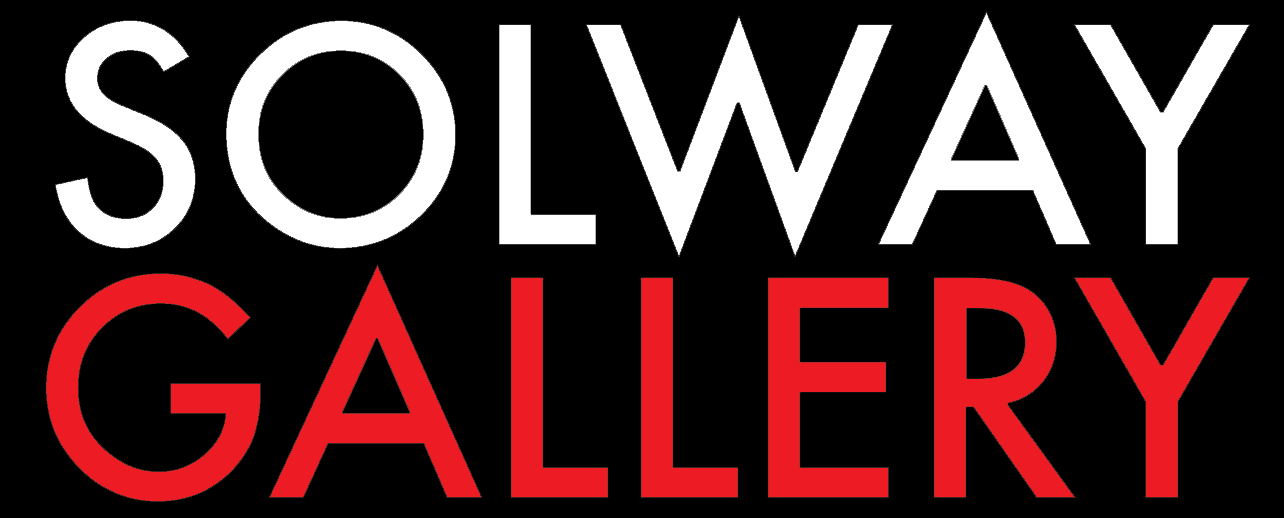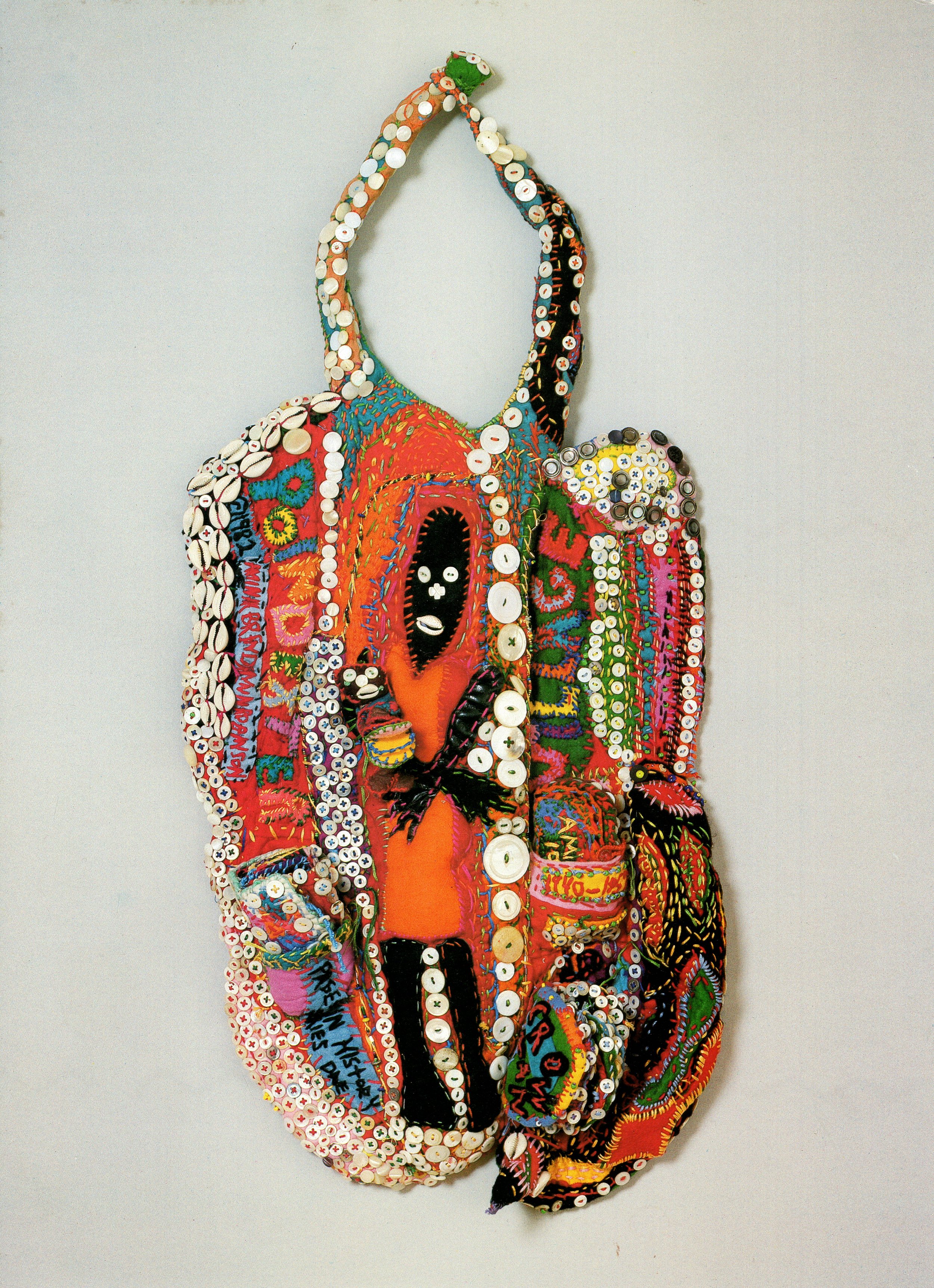Aminah Brenda Lynn Robinson: Works from 1980s, and the Esther and Alan Saks Collection
February 1 - April 26, 2024
Aminah Brenda Lynn Robinson: Works from 1980s, and the Esther and Alan Saks Collection presents the diversity of media in which the artist worked; from quilts and paintings to woodcut prints, books, sculptures, and related ephemera. Through a combination of traditional art materials and everyday objects such as buttons, cloth, and twigs, Robinson celebrated the history of her native city, and the places she visited. Aminah’s daily practice was motivated by an acute desire to depict the collective stories of Black people and how the past impacts their individual experience. She invented new materials to suite her needs, transforming them into elaborate visual records of the Black history lost during slavery.
The works in the exhibition will be from the collection of the late Esther and Alan Saks and the Solway Gallery inventory. The Saks were prominent art advocates and social activists in Chicago, Illinois. Esther operated her namesake gallery from 1983-1998, after which she became a private art dealer, and developed her diverse personal collection over the course of her career.
Biography
Aminah Brenda Lynn Robinson (1940 – 2015) was born on February 18, 1940, to Leroy Edward Robinson and Helen Elizabeth Zimmerman-Robinson in Columbus, Ohio. She was raised within the close-knit community of Poindexter Village, one of the country's first federally funded metropolitan housing developments. The village was "replete with Black cultural traditions such as storytelling, reverence for elders and promotion of creativity". Stories of Black history were passed down to her at an early age and she was eager to share them with her community and the world. Robinson’s Aunt Annie, formerly an enslaved person, taught her about the cruel system of slavery.
Her father encouraged her to draw from the age of 3 and gave her opportunities to learn about her history from elders in the community. He insisted that she listen to music, read literature, and create art every day. He taught her how to work with raw materials and scrap fabrics, specifically, the old-fashioned methods of rabbit-skin glue, and different colored natural pigments. He also taught her his own creation of a mud-like substance called HogMawg, a medium she often incorporates into her art. Her mother taught her how to sew and weave. At 9 years old, she was already deep in “transforming and recording the culture of [her] people into works of art”. Her dedication to her art influenced every aspect of her life; her tools and supplies filled every room. Robinson worked day in and day out, she was "up with the sun, down late at night, sleeping only a few hours before starting again".
Her diverse body of work ranges from drawings and woodcuts to complex sculptures. The artist's "Memory Maps" (multi-media constructions of appliquéd cloth panels) contain "the idea and symbols of Africa—as a reservoir of culture, as the abode of spirits and inspiration for form and meanings that have traversed the great transatlantic African Diaspora to the Americas." Robinson illustrated children's books to empower and educate the next generation. She also created RagGonNon’s, long pieces of fabric filled with diverse materials. The title RagGonNon alludes to the extreme length; the piece rags on and on.
Robinson received her formal art training at the Columbus Art School (now the Columbus College of Art and Design). She is the recipient of numerous awards and honors including the MacArthur Foundation "Genius Award" in 2004. The same year she completed a monumental commission for the National Underground Railroad Freedom Center in Cincinnati, Ohio. She has contributed illustrations for numerous children's books such as Elijah's Angel (Harcourt Brace and Company, 1992), Sophie (Harcourt Brace and Company, 1994), A School for Pompey Walker (Harcourt Brace and Company, 1995) and To Be A Drum (Albert Whitman and Company, 1998). Her work can be found in private and public collections including the Columbus Museum of Art, Ohio; the Richmond Art Museum, Indiana and the Newark Museum, New Jersey, among others.
Leaf, 1978, Ink, beads and embroidery threads, dried tree leaf, Leaf: 15 x 8 1/2 x 3 inches, Case: 20 x 16 x 4 inches
Poindexter Village Quilt, 1966 - 1984, RagGonNon with buttons, beads, cowrie shells, thread, wool, rags, and cloth, 100 1/2 x 102 1/2 inches
Basketwomen on Sapelo Island, Georgia, Hog Hammock Community, May 8, 1987, Ink on graph paper, 11 3/8 x 7 inches, paper, 14 3/8 x 12 ¾ inches, framed
Elijah’s Angel Study, 1990, Watercolor on paper, 11 ¼ x 9 1/8 inches, paper, 14 3/8 x 11 3/8 inches, framed
Poindexter Village Button Book Necklace, 1981 Shells, buttons, thread, leather, wool, and rags on felt 36 x 15 1/4 x 3 1/2 inches Collection of Esther and Alan Saks Trust
Women Hanging Wash; Sellsville Circus Series, 1987, Hogmawg, wood, cloth, buttons, mixed media, 16 ½ x 27 ¾ x 16 5/8 inches
Children’s Table with Two Chairs, 1996, Acrylic on wood with tree branches Signed and dated underneath table, Table: 3 x 2 ft, Chairs: 2 x 3 ft
Ring Dance/Walk Together Children (from the Sapelo Series), 1981, Watercolor and ink on paper, 10 3/4 x 8 inches, image, 15 1/4 x 11 3/8 inches, framed, Collection of Michael Solway
First Families in 1940, Poindexter Village, 1983, Natural dyes, ink, buttons, thread on cotton and linen, 49 x 74 7/8 inches
The Street of the Prophets – Sacred Pages 1 – 20, 1999, A set of 20-fold out sewn together woodcut prints, 25 x 360 inches























